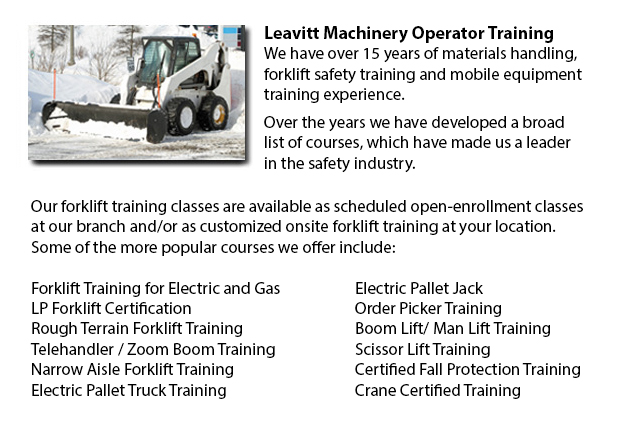
Coquitlam Skid Steer Ticket - The lift arms on the skid-steer loader are placed beside the driver along with pivots behind the driver's shoulders. These features makes the skid-steer loader different as opposed to the traditional front loader. Because of the operator's nearness to moving booms, early skid loaders were not as safe as conventional front loaders, specially all through the operator's entry and exit. Modern skid-steer loaders these days have numerous features to protect the driver including fully-enclosed cabs. Similar to several front loaders, the skid-steer model can push materials from one site to another, is capable of loading material into a truck or trailer and could carry material in its bucket.
Operation
There are a lot of times where the skid-steer loader can be utilized rather than a big excavator on the job location for digging holes from within. To begin, the loader digs a ramp to be utilized to excavate the material out of the hole. As the excavation deepens, the machine reshapes the ramp making it longer and steeper. This is a remarkably functional method for digging below a building where there is not sufficient overhead clearance for the boom of a big excavator. Like for example, this is a common situation when digging a basement under an existing structure or home.
There is much flexibility in the attachments which the skid steer loaders are capable of. For instance, the conventional bucket of many of these loaders can be replaced with many attachments that are powered by the loader's hydraulic system, including mowers, snow blades, cement mixers, pallet forks, backhoes, tree spades and sweepers. Various other popular specialized attachments and buckets include trenchers, angle booms, dumping hoppers, wood chipper machines, grapples, tillers, stump grinders rippers, wheel saws and snow blades.
History
The 3-wheeled front end loader was invented during 1957, by Cyril and Louis Keller in their hometown of Rothsay, Minnesota. The Keller brothers created this machine so as to help mechanize the process of cleaning in turkey barns. This particular equipment was light and compact and had a back caster wheel which allowed it to maneuver and turn around within its own length, enabling it to carry out similar tasks as a conventional front-end loader.
During 1958, the Melroe brothers of Melroe Manufacturing Company in Gwinner, N.D. acquired the rights to the Keller loader. They employed the Keller brothers to continue refining their loader invention. The M-200 Melroe was the result of this particular partnership. This model was a self-propelled loader that was launched to the market in the year 1958. The M-200 Melroe featured a two independent front drive wheels, a rear caster wheel, a 12.9 HP engine and a 750 lb lift capacity. By nineteen sixty, they replaced the caster wheel along with a rear axle and introduced the very first 4 wheel skid steer loader that was known as the M-400.
The M-400 immediately became the Melroe Bobcat. usually the term "Bobcat" is used as a generic term for skid-steer loaders. The M-440 had an 1100 lb rated operating capacity and was powered by a 15.5 HP engine. The business continued the skid-steer development into the mid 1960s and introduced the M600 loader.
-
Coquitlam Crane Certification
Coquitlam Crane Certification - The Crane Certification training program consists of subject matter recommended by industry concerning the safe and efficient operation of cranes. Trainees will be taught the following: how to identify cranes and their... More -
Coquitlam Crane Training Courses
Coquitlam Crane Training Courses - A crane is a kind of equipment designed to move, lift and lower heavy stuff. A crane is usually equipped with a hoist, sheaves, and chains or wire ropes. Cranes are used in the manufacturing, construction and transp... More -
Coquitlam Boom Lift Safety Training
Coquitlam Boom Lift Safey Training - Boom lifts are a kind of elevated work platform or aerial lifting device which are usually used in industry, warehousing and construction. Boom lifts can be utilized in virtually any setting due to their versatili... More -
Coquitlam Boom Lift Training
Coquitlam Boom Lift Training - Aerial platforms or also known as elevated work platforms are devices which allow workers to carry out duties and tasks at elevated heights that would not be otherwise reachable. There are different aerial lifts availab... More -
Coquitlam Forklift Certification Schools
Coquitlam Forklift Certification Schools - Forklift Certification is mandatory within North America. Hence, forklift training programs are important both for businesses and for people looking for jobs in industries as operators of forklifts. Forklift... More -
Coquitlam Wheel Loader Training
Coquitlam Wheel Loader Training - Normally, the different types of heavy equipment training are divided into 2 categories of equipment: those that have rubber tires and tracked vehicles. Tracked vehicles include items like for instance bulldozers, ex... More -
Coquitlam Heavy Equipment Training Schools
Coquitlam Heavy Equipment Training Schools - There are a lot of heavy equipment training schools to choose from. If you would like to get to the best, it is important to examine several factors of the school to be able to determine the level of educa... More -
Coquitlam Telehandler Training Courses
Coquitlam Telehandler Training Courses - Employers are responsible for making sure that their supervisory and operating personnel are trained to work proficiently making use of telehandler equipment. The skill level of workers should be assessed. If... More

Forklift Certification Coquitlam
TOLL FREE: 1-888-254-6157
Coquitlam, British Columbia
forkliftcertificationcoquitlam.com
Email Us
About Us


